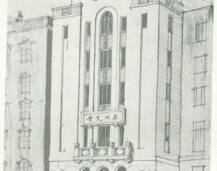
Established in 1857 to investigate subjects connected with China by offering lectures and seminars, providing facilities for research (Library, 1869-1952/ Shanghai Museum, 1874-1948) and publishing (Journal of the North-China Branch of the Royal Asiatic Society, JNCBRAS, 1858-1948), the North-China Branch of the Royal Asiatic Society (NCBRAS) may be considered as having served as an arena for intellectuals and institutions worldwide who were interested in all aspects of China to meet and exchange ideas for nearly a century. The example of the NCBRAS elucidates how learned societies may have been affected by the transnational participants, institutions and the disciplines becoming increasingly diverse, specifically from the immigration, the production of knowledge, the political instability and cross-cultural ideas that pervaded modern China. NCBRAS actually evolved from the Shanghai Literary and Scientific Society under a small group of Western expatriates in order to refresh their mind from ordinary occupations and considerations of daily life. The society later franchised (1859) to be one of the affiliate branches of the Royal Asiatic Society of Great Britain and Ireland (1823-), a learned society which aimed to investigate of subjects connected with and for the encouragement of science, literature and the arts in relation to Asia. NCBRAS continued to expand its reach and influence into both the academia and the public by further developing social networks with its affiliated institutions and related associations involved in different research subjects.
Relying on the society’s publication, academic periodicals, the general press, and the archives from Smithsonian Institution and other notable museums in Western, this project will deal with the global network built by the personnel, institutions, collection, and publishing of the NCBRAS and its associate societies. We intend to examine the reasons why individual (personnel) or collective (organizations) actors with certain qualities (nationality, gender, expertise, occupation, position, institution, etc.) were involved in doing something somewhere at a certain time. We also look forward to exploring the fieldworks of the societies’ leading members, with a special focus on their collecting expeditions in China. Another direction of this project will be geared toward the knowledge produced and published by these scientific and archaeological explorations. As writing and publishing are two important processes for the production, record, and circulation of specific knowledge, we study the content of the JNCBRAS to determine whether the society was included in the realm of “learned societies.” The publishing system of the NCBRAS provides an intriguing case to examine how learned societies may have been constructed by transnational editorship, authorship, readership and by the disciplines becoming increasingly diverse. By both specializing or popularizing specific knowledge in various ways to attract the interest of a broader readership, the JNCBRAS placed its production of knowledge in an ambiguous state between “professional” and “amateur.” Through the analysis of the collected data such as the content of the JNCBRAS — we shall implement digital methods such as Natural Language Processing, Social Network Analysis, and GIS — we intend to identify how the writing style, publishing strategies, readers’ tastes, and the network of interactions between the various actors and institutions involved may have influenced the characteristics of knowledge production, along with the status and development of intellectual communities in nineteenth and early twentieth-century.